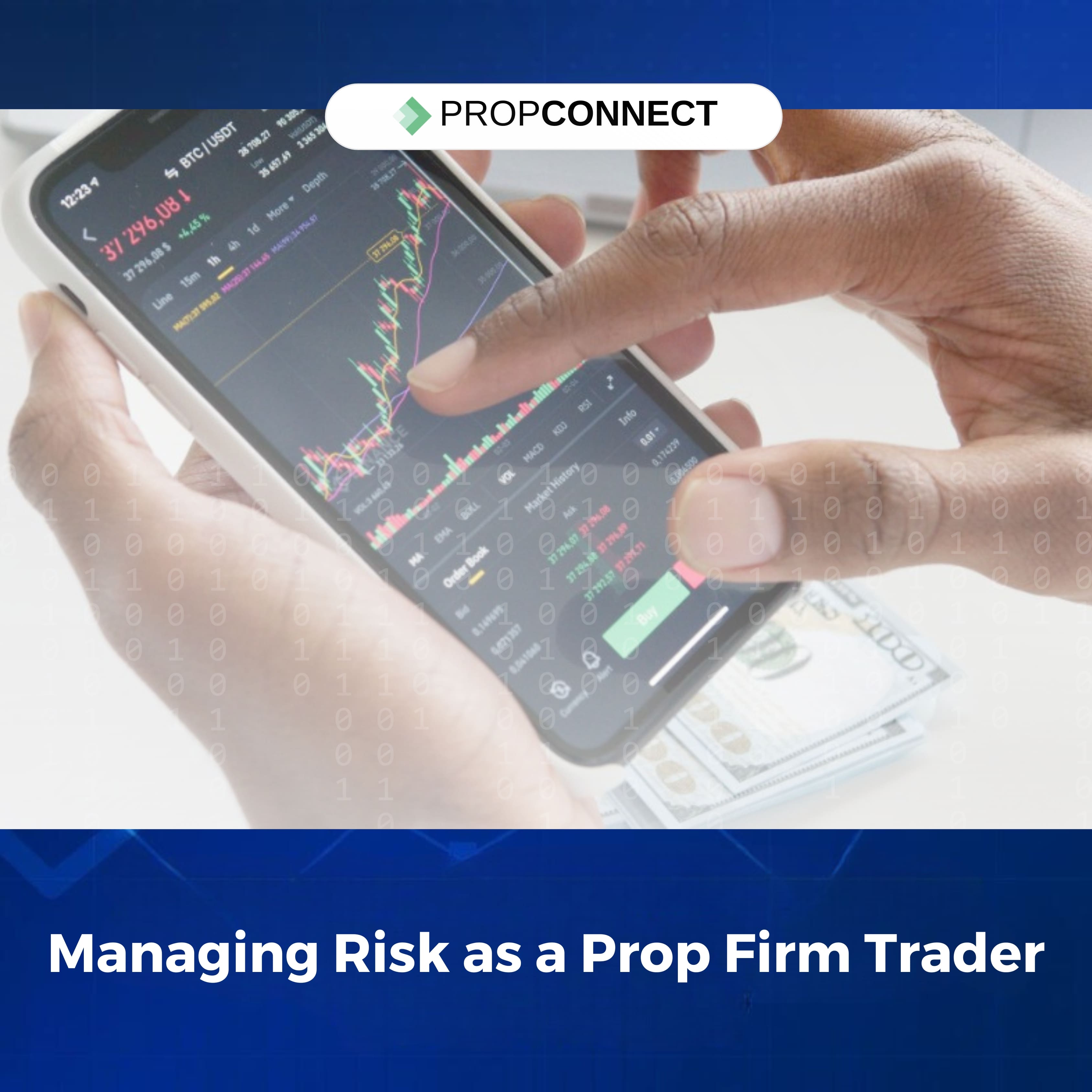Articles
Managing Risk as a Prop Firm Trader
Utilizing stop-loss orders is a practical way to limit potential losses. These orders automatically sell a position when it reaches a predetermined price level. This prevents traders from holding onto losing positions in the hope that they will turn around.

Proprietary trading, often referred to as "prop trading," has become an appealing career choice for many traders. Prop firms, short for proprietary firms, provide traders with the opportunity to trade the firm's capital, allowing for potentially lucrative returns. However, prop firms trading is not without its challenges, and effective risk management is key to success in this industry.
Understanding Prop Firms Trading
Before delving into risk management, it's essential to have a firm grasp of what prop firms trading entails. In prop trading, traders use the firm's capital to make investments, aiming to generate profits. The profits are then shared between the trader and the prop firm, typically with the trader receiving a percentage of the gains.
Recognizing the Advantages
Prop trading offers several advantages, including access to substantial capital, advanced trading tools, and a supportive trading environment. These benefits can empower traders to achieve higher returns compared to trading with limited personal funds.
Managing Risk in Prop Trading
While the rewards can be attractive, prop trading is not without risks. To thrive in this environment, traders must implement effective risk management strategies. Here are some key principles to consider:
Diversification
Diversification is a fundamental risk management strategy. By spreading your investments across various assets and markets, you can reduce the impact of a poor-performing trade on your overall portfolio. Prop traders should diversify their trading strategies and assets to minimize risk.
Position Sizing
Properly sizing your trading positions is critical. Traders should avoid over-leveraging and ensure that no single trade can wipe out a significant portion of their capital. Using a percentage-based position sizing approach can help maintain consistency in managing risk.
Risk-Reward Ratio
A favorable risk-reward ratio is vital in prop trading. This ratio represents the potential reward in relation to the risk taken on a trade. A good rule of thumb is to aim for a ratio of at least 2:1, meaning that the potential profit is at least double the potential loss.
Stop-Loss Orders
Utilizing stop-loss orders is a practical way to limit potential losses. These orders automatically sell a position when it reaches a predetermined price level. This prevents traders from holding onto losing positions in the hope that they will turn around.
Embracing Continuous Learning
Effective risk management is not a one-time effort but an ongoing process. It's essential for prop traders to maintain a proactive approach to continuous learning and market awareness. By increasing this section by 200 words, we can delve deeper into the importance of staying informed and adapting to market developments:
Risk management is an ongoing process, and it's essential for prop traders to stay informed about market developments and adapt their strategies accordingly. Continuous learning and staying up-to-date with the latest market trends can help traders make informed decisions that mitigate risk. In the dynamic world of financial markets, complacency can lead to losses. Therefore, it is crucial for prop traders to embrace a culture of continuous learning.
Networking and Information Sharing
Engaging with peers, mentors, and other industry professionals can be a valuable source of knowledge and insight. Networking within the trading community can provide access to different perspectives and strategies.
By actively engaging in these practices, prop traders can ensure that their skills and strategies remain relevant and effective in a dynamic market environment. Continuous learning allows traders to adapt to changes and minimize risks effectively.
Psychological Preparedness
Psychological preparedness is a critical but often overlooked aspect of risk management in prop trading. The emotional aspect of trading can significantly impact decision-making and trading outcomes. In the expanded section, we'll explore the importance of emotional discipline and maintaining a clear trading plan:
Prop traders should not overlook the psychological aspect of risk management. Trading can be stressful, and emotional decision-making can lead to significant losses. Developing emotional discipline and maintaining a clear trading plan can help traders stay focused and resilient in the face of market fluctuations.
Conclusion
In the world of prop firms trading, the potential for profit
is considerable, but so is the risk. Effective risk management is the cornerstone
of a successful prop trading career. By understanding the principles of
diversification, position sizing, risk-reward ratios, stop-loss orders,
continuous learning, and psychological preparedness, prop traders can better
navigate the challenges and uncertainties of the market. Ultimately, a
well-rounded approach to risk management can help prop firm traders achieve
their financial goals while safeguarding their capital.

